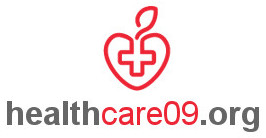Pilates is a combination of around 500 exercises inspired by yoga and ballet. It helps to lengthen and stretch all major muscles in the body and is done in a systemic way. It improves core strength, body awareness and overall flexibility.
In doing Pilates, you will never be sweating profusely nor will your muscles ache with pain. The main aim is to concentrate on completely every movement as precisely as possible. The workouts consist of low impact sequences that are repeated every five to ten times. Equipment includes mats and resistance bands or balls. Sessions can take anywhere from 45mins to over an hour depends on the classes and personal trainers. There are a range of classes or courses available but talk to people before choosing from among the best pilates courses.
The Pilates method is taught to suit each person and exercises are regularly re-evaluated to make sure they are suitable for that person. Due to the individual attention, this method can suit everybody from professional athletes, pregnant women and people who rarely exercise. Classes can be held in specialized studios, or at a local community centre.
What is Pilates?
Pilates can be considered both- aerobic and non aerobic form of exercise. It requires increased concentration and focus because your body is subject to a fixed set of motion. It helps to lengthen and stretch all major muscles in your body. You have to have strong concentration in order to complete each movement accurately. Each exercise is different in the sense it has a different rhythm and breathing pattern.In doing Pilates, you will never be sweating profusely nor will your muscles ache with pain. The main aim is to concentrate on completely every movement as precisely as possible. The workouts consist of low impact sequences that are repeated every five to ten times. Equipment includes mats and resistance bands or balls. Sessions can take anywhere from 45mins to over an hour depends on the classes and personal trainers. There are a range of classes or courses available but talk to people before choosing from among the best pilates courses.
The Pilates method is taught to suit each person and exercises are regularly re-evaluated to make sure they are suitable for that person. Due to the individual attention, this method can suit everybody from professional athletes, pregnant women and people who rarely exercise. Classes can be held in specialized studios, or at a local community centre.
Health benefits
The health benefits of Pilates comprise of:- Enhanced flexibility
- Improved muscle strength and tone, mainly in your abdominal muscles, hips, and lower back
- Equal muscular strength on both sides of your body
- Improved control of your limbs and back
- Enhanced stabilization of your spine
- Enhanced posture
- Improved coordination and balance
- Relaxation of your upper body especially neck and shoulders
- Safe healing from spinal related injuries
- Improved lung capacity and breathing pattern
- Enhanced concentration
- A increased awareness of your body
- Stress reliever and relaxation
Pilates is suitable for everyone
, from beginner to expert. You can perform exercises using your own body weight, or with the help of extra equipment.
A classic Pilates workout includes a number of exercises and stretches. every exercise is performed with attention to proper breathing practices and abdominal muscle control. For optimum results it is best that you do the workouts at least two or three times per week. You may notice improvements in posture after only 10 sessions. By 20 sessions, you will notice a big change in your overall breathing patterns and core strength.
A typical Pilates exercise might have you keeping one leg upright so that your toes point to the ceiling, and using the other leg to slowly raise and lower your body. You will need strong abdominal and buttock muscles to keep your hips tight, and should make sure that you focus on the movements to prevent from falling over.
A classic Pilates workout includes a number of exercises and stretches. every exercise is performed with attention to proper breathing practices and abdominal muscle control. For optimum results it is best that you do the workouts at least two or three times per week. You may notice improvements in posture after only 10 sessions. By 20 sessions, you will notice a big change in your overall breathing patterns and core strength.
A Challenge for your body
Pilates takes some inspiration from yoga, but it differs in one main respect as in yoga is made up of a series of stagnant postures, while Pilates is all about adjusting your body to form unique postures and can pose a challenge when you try to move your limbs.A typical Pilates exercise might have you keeping one leg upright so that your toes point to the ceiling, and using the other leg to slowly raise and lower your body. You will need strong abdominal and buttock muscles to keep your hips tight, and should make sure that you focus on the movements to prevent from falling over.
General rules to remember when doing Pilates
Although Pilates is a low-impact form of exercise, some people should discuss with a medical profession before starting any new exercise program. These include:-- Anyone who has had surgery done recently
- Pregnant women
- People over 40 years
- People with medical conditions such as heart disease
- People with serious injuries or disorders
- People who do not exercise regularly
- People who are obese or overweight







0 comments :
Post a Comment